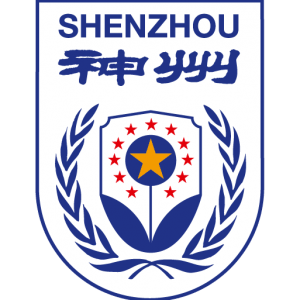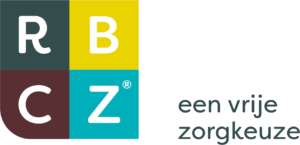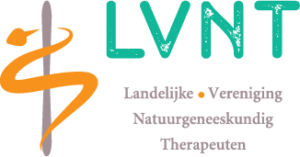Acupuncture
Acupuncture
Helps with:
- Wellbeing
- Metal health
- Physical complications
Treatment intensity
- mild
- moderate
- Strong
- N.A.
Price
- 45 Min: € 66,00
Reimbursed by the health insurer?
- Yes
Guasha
Helps with:
- Therapeutic
- Muscle strain
- Physical complications
Treatment intensity
- mild
- moderate
- Strong
- N.A.
Price
- 45 Min: € 66,00
Reimbursed by the health insurer?
- No
Cupping
Helps with:
- Therapeutic
- Muscle strain
- Physical complications
Treatment intensity
- mild
- moderate
- Strong
- N.A.
Price
- 45 Min: € 66,00
Reimbursed by the health insurer?
- No
Prices include VAT
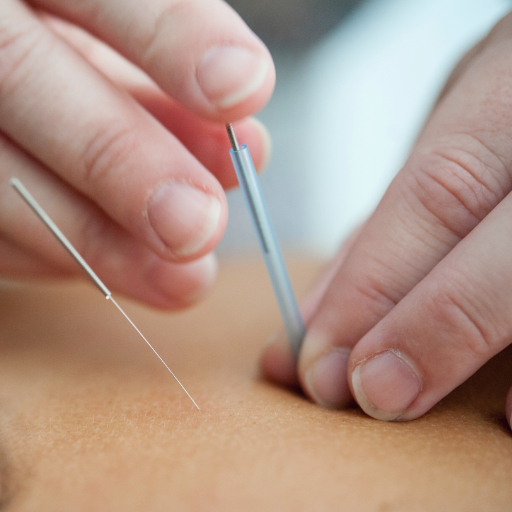
Acupuncture
Acupuncture
Acupuncture promotes and restores the energy balance of the body. Acupuncture helps against a wide range of ailments, from emotional disorders (anxiety, depression) to digestive complaints (nausea, vomiting). It reduces pain syndromes that arise as a result of an injury or a chronic disease, such as rheumatoid arthritis.
Acupuncture may also be helpful in treating neurological problems, such as migraines or Parkinson's disease. Acupuncture can also be part of a rehabilitation strategy, for example for people who have had a stroke. Respiratory conditions, including sinusitis and asthma, can be relieved with acupuncture, as can many gynecological conditions and infertility.
Acupuncture has also been shown to be beneficial in reducing fatigue and addictions as well as promoting overall well-being.
Before the treatment:
During the treatment
- Underwear stays on
- Covered with a towel
- Behandeling vindt plaats in een privéruimte
- Tijdens de behandeling ligt u op een massagetafel
Precautions
- Prior to needle insertion, the affected area is cleaned with alcohol to reduce the very small chance of infection. Needles are, of course, only used once.
May not be suitable for:
- Patients with bleeding disorders
- The use of blood thinners
- Dystrophy
- Consult your doctor if in doubt about this treatment
Price
- 45 Min: € 66,00
Acupuncture is usually reimbursed by your health insurer, consult your health insurer for more information.
Acupunctuur helpt bij:
For, among other things: food, dust mites, pets, pollen.
Chest tension, chest fullness, chest pain and palpitations.
Menstrual complications, premenstrual complaints (PMS), menopausal complaints, tense and painful breasts, certain forms of reduced fertility, white discharge (leukorrhea), guidance of IUI/IVF/ICSI trajectory.
Anemia, coldness, circulation problems, high blood pressure, low blood pressure, thyroid disorders, diabetes, being overweight.
Anemia, coldness, circulation problems, high blood pressure, low blood pressure, thyroid disorders, diabetes, overweight.
(chronic) nose cold, sinus infection, sinus infection, allergic cold, hay fever, earache or ear infection, ringing in the ears or ringing in the ears, certain cases of deafness, cough, hoarseness, sore throat, speech problems, lump in the throat gum problems, toothache, canker sores, bad breath, bitter taste in the mouth, dry mouth (xerostomia), increased salivation, cold sore.
Cough, cold, asthma, bronchitis, strep throat, intestinal complaints, abdominal pain, bedwetting, sleeping problems, teething, eczema, earache/inflammation.
Cold limbs, feeling of heaviness, fluid retention (oedema).
Sleep disturbances, many dreams, hyperventilation, restlessness, anxiety, fainting, compulsive crying or laughing, depression, startle easily, forgetfulness, anorexia nervosa, listlessness, lack of energy, general weakness, overstrain, stress, burnout.
Inflamed eyes, itchy eyes, watery eyes, dry eyes, burning eyes, blurred or spotty vision, visual impairment.
Inflamed eyes, itchy eyes, watery eyes, dry eyes, burning eyes, blurred or spotty vision, visual impairment.
Urinary tract infection, incontinence, bladder or kidney stones, impotence, impaired fertility, premature or nocturnal ejaculation, prostate complaints
Smoking addiction, food addiction, alcohol addiction, drug addiction (these treatments are no longer reimbursed by the insurance).
Hernia, numbness, nerve inflammation/pain (neuralgia), such as: – intercostal neuralgia (nerve pain between the ribs) – sciatica, sciatica – neuralgia after shingles – facial pain, trigeminal neuralgia consequences of whiplash (pain, dizziness, fatigue, loss of concentration), epilepsy, consequences of CVA (cerebral hemorrhage, cerebral infarction), Parkinson's disease, Multiple Sclerosis.
Nausea, acid reflux, breech presentation, induce labor, postpartum pain, encourage breastfeeding, mastitis.
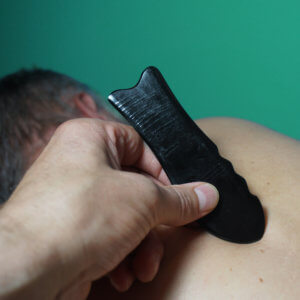
Guasha
What is guasha?
Guasha is a natural, alternative therapy that involves abrading the skin to improve circulation. This ancient Chinese technique improves health and helps against chronic pain. Scraping the skin is done with a smooth-edged instrument, which makes short or long strokes across the body. Prior to this, the area to be treated is rubbed with massage oil.
Guasha is intended to target stagnant energy, called chi, in the body and thereby treat inflammation. Inflammation is the underlying cause of several conditions associated with chronic pain. Rubbing the surface of the skin promotes the healing process.
Guasha is usually performed on a person's back, buttocks, neck, arms and legs. The treatment starts with a gentle pressure. Gradually, the intensity can be increased to determine how much power you can handle.
Does guasha have side effects?
As a natural healing agent, guasha is safe.
However, the procedure may temporarily change the appearance of the skin. Since it involves rubbing or scraping the skin with a massage tool, small blood vessels known as capillaries near the surface of the skin can burst. This can lead to bruising of the skin. Bruising usually disappears within a few days. Some people also experience a temporary indentation of their skin after a guasha treatment. The tools are disinfected after each treatment to prevent transmission of infections.
Guasha is also traditionally used with:
- Ailments that cause chronic pain such as;
- Inflammation
- Artritis en fibromyalgie
- Conditions that cause muscle and joint pain
- Hepatitis B
- Migraines and headaches
- Neck pain
- Tourette's syndrome
- Insomnia
- Irregular menstruation
- Fear
- Exhaustion
- hot flashes
- Cold
Before the treatment:
We will discuss whether you have any medical issues.
During the treatment
- Underwear stays on
- Covered with a towel
- Treatment takes place in a private room
- During the treatment you will lie on a massage table
Risks:
- If in doubt about this treatment, consult your doctor
May not be suitable for:
- Spontaneous bruising
- Brittle skin
- Burns or healing wounds
- Deep Vein Thrombosis
- Fractures
Not suitable for people on blood thinners or who have clotting disorders.
Avoid this technique if you have had surgery in the past six weeks.
Price
- 45 Min: € 66,00
Not reimbursed by the health insurer.
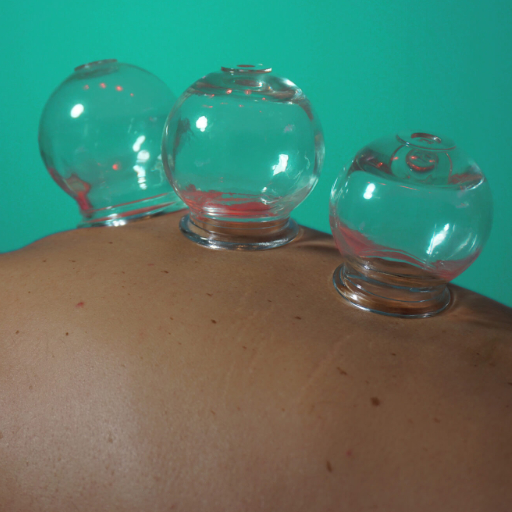
Cupping
What is cupping?
A therapeutic cupping treatment involves heating and placing cups, usually made of glass, on the skin. By heating the air in the cup, a vacuum is created and when applied to the skin, the tissue is drawn into the cup. This increases the blood supply, loosens the connective tissue and stimulates healing.
The cups are often placed on the back, neck and shoulders or the painful area. Cupping can cause temporary bruising and pain, depending on the suction created by the vacuum and the level of internal stagnation.
Where does cupping originate from?
Are there different kinds of cupping?
The cupping can be performed on one spot on the body. The cups are then left in place anywhere on the body for between five and twenty minutes, depending on the nature of the treatment and the individual's condition. A general course of treatment consists of four to six sessions in intervals with a break of three to ten days.
The cupping can also be performed with a cup that slides over the body. This technique is traditionally performed on large muscle groups in the back to treat pain and muscle spasms. Massage oil is applied to the skin before the cups are placed, allowing the cups to slide easily over the surface of the skin.
In athletes, cupping can help increase blood flow to a particular muscle area. Numerous athletes of the Rio 2016 Olympics used cupping. This was easy to see from the circular markings on some American swimmers.
Cupping is also traditionally used with:
Cupping stimulates the local circulation of qi and blood in the area to be treated, eliminating swelling, pain and tension. By drawing impurities to the surface, it removes toxins from the painful area. It also stimulates blood circulation. Techniques such as cupping, acupuncture and massage have been shown to relax tissue and reduce inflammation.
What are the benefits of cupping?
Before the treatment:
We will discuss whether you have any medical issues.
During the treatment
- Underwear stays on
- Covered with a towel
- Treatment takes place in a private room
- During the treatment you will lie on a massage table
Risks:
- If in doubt about this treatment, consult your doctor
May not be suitable for:
- Spontaneous bruising
- Brittle skin
- Burns or healing wounds
- Deep Vein Thrombosis
- Fractures
Price
- 45 Min: € 66,00
Not reimbursed by the health insurer.

